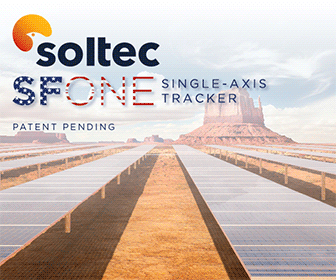A Solar Powered House in the North of Sweden - Skellefteå Kraft Challenges the Energy Market with a Real-Time Experiment
A detached house, completely disconnected from the grid which can produce its own energy all year around by the use of solar energy - what's so special about that? Well consider this, is exists in a place where there can be as little as zero hours of sunlight during parts of the year. Skellefteå Kraft is initiating the 'Zero Sun project', a realtime experiment open to the public, challenging our perceptions of how we relate to energy by building the world's first solar powered house adapted for the North Swedish climate.
The house itself is a regular detached house of 150 square meters, the difference being that it's not connected to the electricity or district heating grid. The house is completely self-sufficient in terms of energy. It is turned on and off by the flick of a switch and the garage becomes its very own energy hub.
The system is produced in close collaboration with Hans Olof Nilsson, who has built his own self-sufficient house in Gothenburg that has gotten a lot of attention. Thanks to a self-sufficient energy system consisting of solar panels, batteries, hydrogen and fuel cells, the house in Skellefteå will have the ability to run whilst being completely disconnected from the electricity grid. The house will collect solar energy during the summer months and the excess will be stored for use during the winter and the months where there is limited sun activity.
- When the conditions are the worst in Skellefteå, it can be as little as zero hours of sunshine, dark and very cold. Building a fossil free, self-sufficient house fit for the North Swedish climate is a much bigger challenge than doing it further South, explains Christoffer Svanberg, Business Innovation Chief at Skellefteå Kraft.
The house in Skellefteå, which will be built in collaboration with A-hus, will be finished by June 2018. After completion, the public will be able to book a stay in the house.
- This is an organic/live experiment and we want to involve as many people as possible. In the end, it is also about making solar technology accessible to the masses, says Christoffer Svanberg.
The government's goal is that Sweden will have 100% renewable energy production by 2040. The combined effect of nearly 10,000 million kilowatts of nuclear power will be phased out. This requires increased efficiency in hydropower, and will live parallel to the expansion of sun and wind power.
- We dare to test unexplored paths and new smart technical solutions to be able to utilize renewable energy in an innovative way, says Christoffer Svanberg. The energy market of the future will not look anything like it does today and this is what we want to demonstrate with the house in our Zero Sun Project, he concluded.
Skellefteå Kraft | www.skekraft.se










.gif?r=6995)
.jpg?r=5321)
.jpg?r=3086)